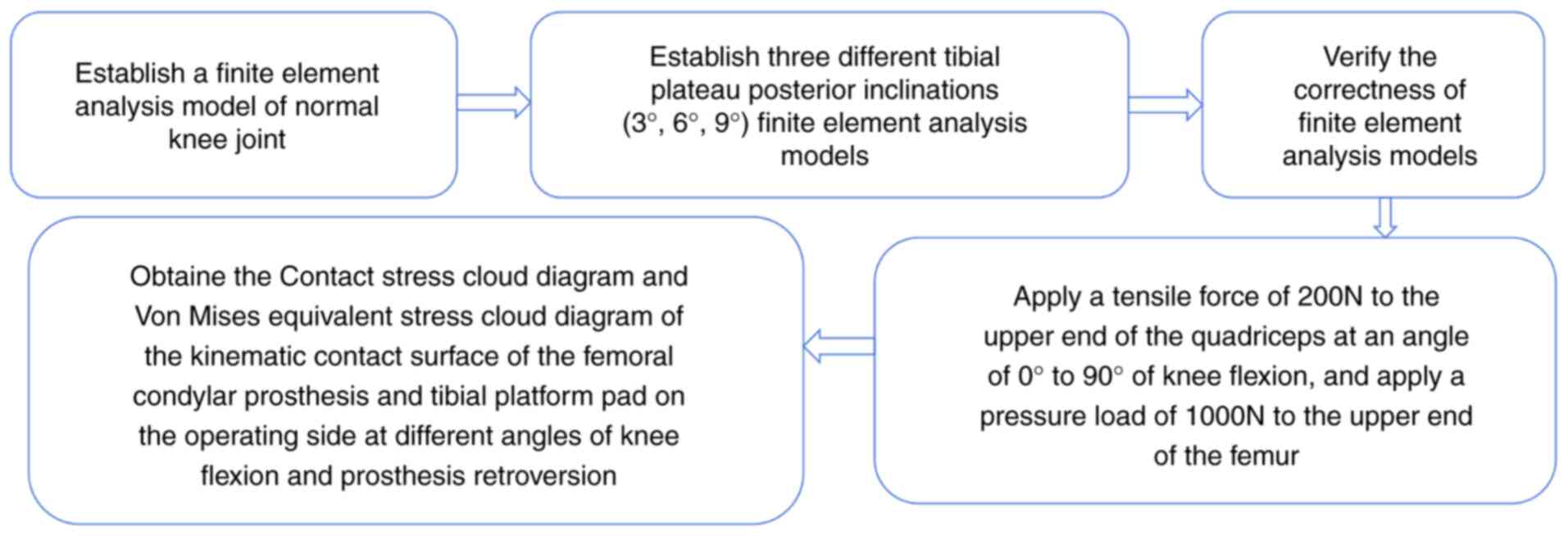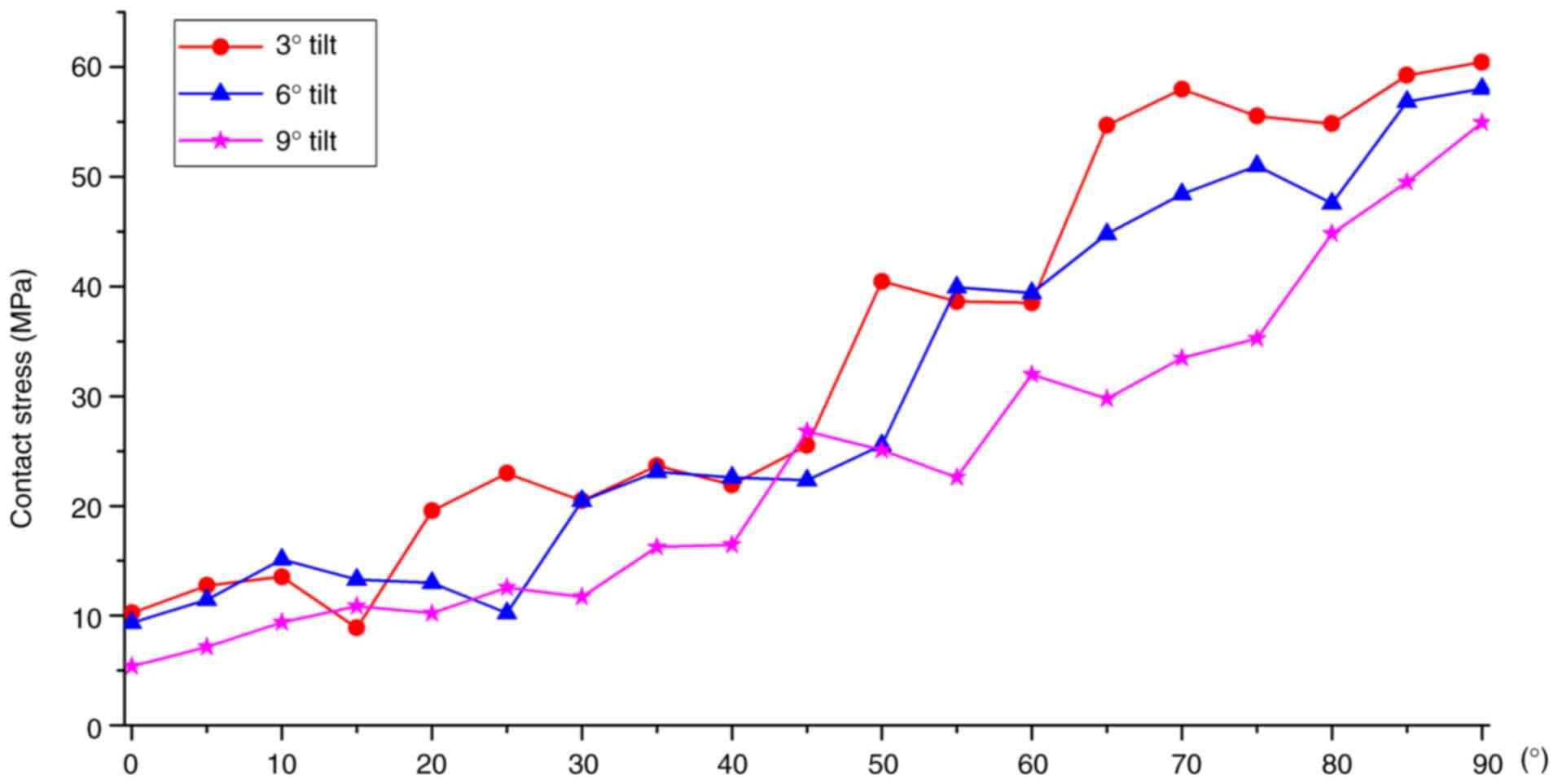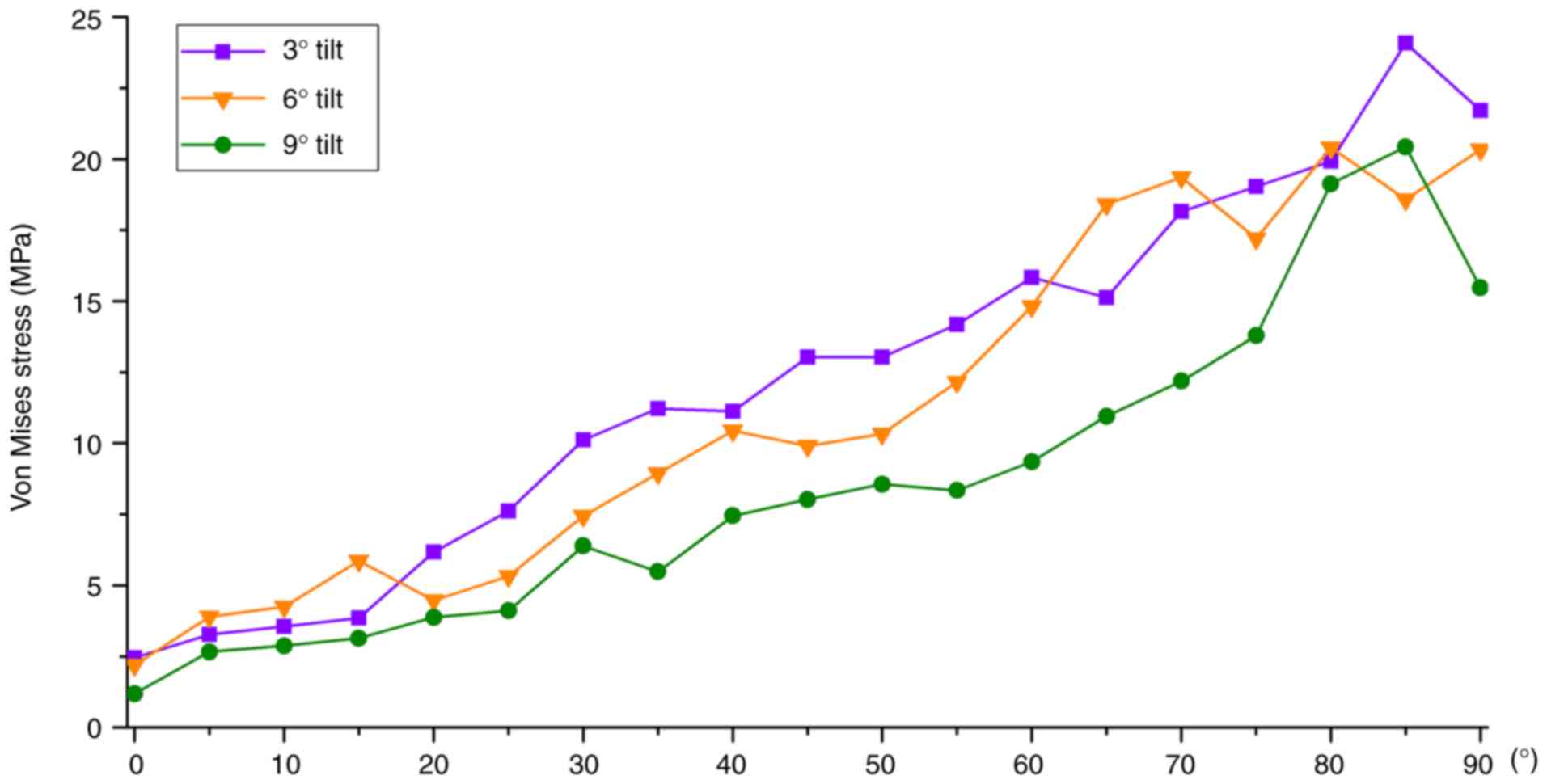|
1
|
Liu Y, Zhang Z, Li T, Xu H and Zhang H:
Senescence in osteoarthritis: From mechanism to potential
treatment. Arthritis Res Ther. 24(174)2022.PubMed/NCBI View Article : Google Scholar
|
|
2
|
Heekin RD and Fokin AA: Incidence of
bicompartmental osteoarthritis in patients undergoing total and
unicompartmental knee arthroplasty: Is the time ripe for a less
radical treatment? J Knee Surg. 27:77–81. 2014.PubMed/NCBI View Article : Google Scholar
|
|
3
|
van der List JP, Zuiderbaan HA and Pearle
AD: Why do medial unicompartmental knee arthroplasties fail today?
J Arthroplasty. 31:1016–1021. 2016.PubMed/NCBI View Article : Google Scholar
|
|
4
|
Saragaglia D, Bonnin M, Dejour D,
Deschamps G, Chol C, Chabert B and Refaie R: French Society of Hip
and Knee. Results of a French multicentre retrospective experience
with four hundred and eighteen failed unicondylar knee
arthroplasties. Int Orthop. 37:1273–1278. 2013.PubMed/NCBI View Article : Google Scholar
|
|
5
|
Ghosh P, Mohammad HR, Martin B, Campi S,
Murray DW and Mellon SJ: Low polyethylene creep and wear following
mobile-bearing unicompartmental knee replacement. Knee Surg Sports
Traumatol Arthrosc. 29:3433–3442. 2021.PubMed/NCBI View Article : Google Scholar
|
|
6
|
Grupp TM, Utzschneider S, Schröder C,
Schwiesau J, Fritz B, Maas A, Blömer W and Jansson V: Biotribology
of alternative bearing materials for unicompartmental knee
arthroplasty. Acta Biomater. 6:3601–3610. 2010.PubMed/NCBI View Article : Google Scholar
|
|
7
|
Müller PE, Pellengahr C, Witt M, Kircher
J, Refior HJ and Jansson V: Influence of minimally invasive surgery
on implant positioning and the functional outcome for medial
unicompartmental knee arthroplasty. J Arthroplasty. 19:296–301.
2004.PubMed/NCBI View Article : Google Scholar
|
|
8
|
Barbadoro P, Ensini A, Leardini A, d'Amato
M, Feliciangeli A, Timoncini A, Amadei F, Belvedere C and Giannini
S: Tibial component alignment and risk of loosening in
unicompartmental knee arthroplasty: A radiographic and
radiostereometric study. Knee Surg Sports Traumatol Arthrosc.
22:3157–3162. 2014.PubMed/NCBI View Article : Google Scholar
|
|
9
|
Pfeiffer FM: The use of finite element
analysis to enhance research and clinical practice in orthopedics.
J Knee Surg. 29:149–158. 2016.PubMed/NCBI View Article : Google Scholar
|
|
10
|
Weber P, Woiczinski M, Steinbrück A,
Schmidutz F, Niethammer T, Schröder C, Jansson V and Müller PE:
Increase in the tibial slope in unicondylar knee replacement:
Analysis of the effect on the kinematics and ligaments in a
weight-bearing finite element model. Biomed Res Int.
2018(8743604)2018.PubMed/NCBI View Article : Google Scholar
|
|
11
|
Iesaka K, Tsumura H, Sonoda H, Sawatari T,
Takasita M and Torisu T: The effects of tibial component
inclination on bone stress after unicompartmental knee
arthroplasty. J Biomech. 35:969–974. 2002.PubMed/NCBI View Article : Google Scholar
|
|
12
|
Sawatari T, Tsumura H, Iesaka K, Furushiro
Y and Torisu T: Three-dimensional finite element analysis of
unicompartmental knee arthroplasty-the influence of tibial
component inclination. J Orthop Res. 23:549–554. 2005.PubMed/NCBI View Article : Google Scholar
|
|
13
|
Luo CF: Reference axes for reconstruction
of the knee. Knee. 11:251–257. 2004.PubMed/NCBI View Article : Google Scholar
|
|
14
|
Ollivier M, Abdel MP, Parratte S and
Argenson JN: Lateral unicondylar knee arthroplasty (UKA):
Contemporary indications, surgical technique, and results. Int
Orthop. 38:449–455. 2014.PubMed/NCBI View Article : Google Scholar
|
|
15
|
Fukushima H, Hashimoto Y, Yoshiya S,
Kurosaka M, Matsuda M, Kawamura S and Iwatsubo T: Conduction
analysis of cement interface temperature in total knee
arthroplasty. Kobe J Med Sci. 48:63–72. 2002.PubMed/NCBI
|
|
16
|
Hai Y, Cheng S, Guo Y and Li S: Mesh
smoothing algorithm based on exterior angles split. PLoS One.
15(e0232854)2020.PubMed/NCBI View Article : Google Scholar
|
|
17
|
Mesfar W and Shirazi-Adl A: Biomechanics
of the knee joint in flexion under various quadriceps forces. Knee.
12:424–434. 2005.PubMed/NCBI View Article : Google Scholar
|
|
18
|
Wan C, Hao Z, Li Z and Lin J: Finite
element simulations of different hamstring tendon graft lengths and
related fixations in anterior cruciate ligament reconstruction. Med
Biol Eng Comput. 55:2097–2106. 2017.PubMed/NCBI View Article : Google Scholar
|
|
19
|
El'Sheikh HF, MacDonald BJ and Hashmi MSJ:
Finite element simulation of the hip joint during stumbling: A
comparison between static and dynamic loading. J Materials
Processing Technology. 143-144:249–255. 2003.
|
|
20
|
Mesfar W and Shirazi-Adl A: Biomechanics
of changes in ACL and PCL material properties or prestrains in
flexion under muscle force-implications in ligament reconstruction.
Comput Methods Biomech Biomed Engin. 9:201–209. 2006.PubMed/NCBI View Article : Google Scholar
|
|
21
|
Abramowitch SD, Zhang X, Curran M and
Kilger R: A comparison of the quasi-static mechanical and
non-linear viscoelastic properties of the human semitendinosus and
gracilis tendons. Clin Biomech (Bristol, Avon). 25:325–331.
2010.PubMed/NCBI View Article : Google Scholar
|
|
22
|
Lin W and Klein J: Recent progress in
cartilage lubrication. Adv Mater. 33(e2005513)2021.PubMed/NCBI View Article : Google Scholar
|
|
23
|
Mononen ME, Mikkola MT, Julkunen P, Ojala
R, Nieminen MT, Jurvelin JS and Korhonen RK: Effect of superficial
collagen patterns and fibrillation of femoral articular cartilage
on knee joint mechanics-a 3D finite element analysis. J Biomech.
45:579–587. 2012.PubMed/NCBI View Article : Google Scholar
|
|
24
|
Grood ES, Suntay WJ, Noyes FR and Butler
DL: Biomechanics of the knee-extension exercise. Effect of cutting
the anterior cruciate ligament. J Bone Joint Surg Am. 66:725–735.
1984.PubMed/NCBI
|
|
25
|
Bao HRC, Zhu D, Gong H and Gu GS: The
effect of complete radial lateral meniscus posterior root tear on
the knee contact mechanics: A finite element analysis. J Orthop
Sci. 18:256–263. 2013.PubMed/NCBI View Article : Google Scholar
|
|
26
|
Song Y, Debski RE, Musahl V, Thomas M and
Woo SLY: A three-dimensional finite element model of the human
anterior cruciate ligament: A computational analysis with
experimental validation. J Biomech. 37:383–390. 2004.PubMed/NCBI View Article : Google Scholar
|
|
27
|
Kim SJ, Bae JH and Lim HC: Factors
affecting the postoperative limb alignment and clinical outcome
after Oxford unicompartmental knee arthroplasty. J Arthroplasty.
27:1210–1215. 2012.PubMed/NCBI View Article : Google Scholar
|
|
28
|
Konyves A, Willis-Owen CA and Spriggins
AJ: The long-term benefit of computer-assisted surgical navigation
in unicompartmental knee arthroplasty. J Orthop Surg Res.
5(94)2010.PubMed/NCBI View Article : Google Scholar
|
|
29
|
Pourzal R, Cip J, Rad E, Laurent MP,
Berger RA, Jacobs JJ and Wimmer MA: Joint line elevation and tibial
slope are associated with increased polyethylene wear in
cruciate-retaining total knee replacement. J Orthop Res.
38:1596–1606. 2020.PubMed/NCBI View Article : Google Scholar
|
|
30
|
Weber P, Schröder C, Schmidutz F,
Kraxenberger M, Utzschneider S, Jansson V and Müller PE: Increase
of tibial slope reduces backside wear in medial mobile bearing
unicompartmental knee arthroplasty. Clin Biomech (Bristol, Avon).
28:904–909. 2013.PubMed/NCBI View Article : Google Scholar
|
|
31
|
Aleto TJ, Berend ME, Ritter MA, Faris PM
and Meneghini RM: Early failure of unicompartmental knee
arthroplasty leading to revision. J Arthroplasty. 23:159–163.
2008.PubMed/NCBI View Article : Google Scholar
|
|
32
|
Suero EM, Citak M, Cross MB, Bosscher MRF,
Ranawat AS and Pearle AD: Effects of tibial slope changes in the
stability of fixed bearing medial unicompartmental arthroplasty in
anterior cruciate ligament deficient knees. Knee. 19:365–369.
2012.PubMed/NCBI View Article : Google Scholar
|
























